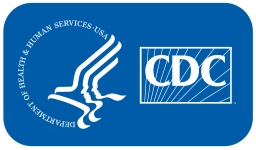
On Monday, Oct. 5, 2020, the Centers for Disease Control and Prevention (CDC) issued new guidance explaining that the coronavirus can be spread through the air.
Specifically, the CDC says in its new guidance that the virus that causes COVID-19 can sometimes spread among people who are more than 6 feet apart and through airborne particles that “linger in the air for minutes to hours.” This means that being indoors or in close contact with other people, especially when prevention strategies aren’t followed and there is poor ventilation, may increase the risk of transmission.
While this new guidance confirms that COVID-19 can be spread through the air, the CDC reaffirmed that COVID-19 is mainly transmitted through close person-to-person contact, including between people who are physically near each other. The agency said it’s “much more common” for COVID-19 to spread when someone is in close contact with an infected person who produces larger respiratory droplets by coughing, sneezing, singing, talking or breathing.
In addition, the CDC states that COVID-19 can be spread by touching a contaminated surface, but that this is not the main way COVID-19 spreads.
What does this mean for me?
COVID-19 is highly contagious, and the CDC explains that, in general, the risk of COVID-19 spreading increases the longer and closer an infected individual interacts with others.
In the new guidance, the CDC revised its tips for protecting yourself and others. To keep yourself safe and prevent the spread of COVID-19:
- Practice social distancing by staying at least 6 feet away from others whenever possible.
- Wear a face covering or cloth face mask when out in public or around others. It’s important to remember that wearing a mask or face covering does not replace other prevention strategies.
 “[The CDC] continues to believe, based on current science, that people are more likely to become infected the longer and closer they are to a person with COVID-19.”
“[The CDC] continues to believe, based on current science, that people are more likely to become infected the longer and closer they are to a person with COVID-19.”
– The CDC, in a statement Monday
- Wash your hands often with soap and warm water, especially before and after touching your face, or coughing or sneezing.
- Use a safe hand sanitizer that contains at least 60% alcohol when soap and water aren’t available.
- Use an air purifier to reduce airborne germs in indoor spaces.
- Frequently clean and disinfect high-touch surfaces at home and at work (e.g., doorknobs, countertops, faucets and phones).
- Avoid touching your eyes, nose and mouth with unwashed hands.
- Cover your mouth and nose with a tissue, or use the inside of your elbow when you cough or sneeze.
- Properly dispose of used tissues in the trash.
- Stay home when you’re feeling sick.
- Monitor yourself for symptoms daily.
If you feel sick, contact your doctor to explain your symptoms and obtain information about the next steps you should take. As flu season begins, remember that the seasonal flu and COVID-19 share many symptoms. As such, it’s extremely important to stay home when you’re feeling ill.
What’s next?
The COVID-19 pandemic is constantly evolving. Be sure to follow the most recent guidance available to ensure you’re doing your part to stay safe and prevent the spread of COVID-19.
The content of this News Brief is of general interest and is not intended to apply to specific circumstances. It should not be regarded as legal advice and not be relied upon as such. In relation to any particular problem which they may have, readers are advised to seek specific advice. © 2020 Zywave, Inc. All rights reserved.


